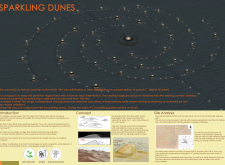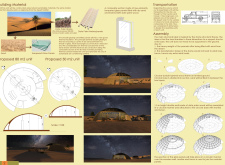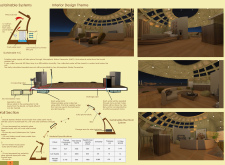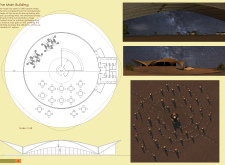5 key facts about this project
The design is located in the southeastern corner of the UAE, within a region known for its challenging tropical desert climate and limited rainfall. This lodge serves as a luxurious living space, intentionally designed to blend with the natural landscape while reducing human impact on the environment. The overall concept prioritizes the respect for both nature and local culture. The lodge aims to create a structure that is unobtrusive from both the ground and aerial perspectives. Upon disassembly, it will allow the land to return to its original state, emphasizing ecological preservation throughout its existence.
Design Inspiration
The architecture draws inspiration from the way wind shapes sand dunes. The forms of the buildings mimic the wave-like structures of crescent-shaped dunes, which enhances integration with the surrounding landscape. This connection to nature encourages a visual dialogue, blending the man-made and natural realms.
Climatic Considerations
Local climate conditions influence the design significantly. The area experiences high radiation during the summer, which requires thoughtful orientation and layout of units to ensure proper ventilation and reduce heat gain. The shapes of the structures are designed to be aerodynamically efficient. This design choice allows for better airflow, helping to create comfortable interior environments.
Material Palette
The materials chosen for construction highlight sustainability and local sourcing. These include sand, date palm waste, and date palm timber. The use of these materials enhances thermal performance. Composite panels filled with sand and framed with date palm wood serve as effective insulation, limiting heat transfer and ensuring the buildings meld with their environment.
Sustainable Systems
Sustainability is central to the design philosophy. Water supply is managed through Atmospheric Water Generators, which collect moisture from the air. Waste management systems consist of composting toilets and bio-remediation tanks. These strategies support low-impact living in a harsh climate, aligning with the focus on ecological responsibility.
The units feature clean, streamlined forms that align with the surrounding topography, showcasing careful attention to local conditions. The main hub, large and appropriately shaded, prioritizes energy efficiency while cultivating a connection to the desert landscape.
























































